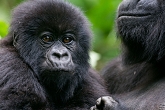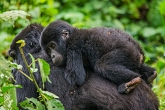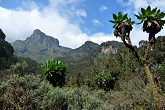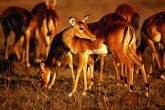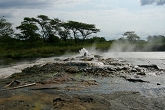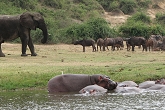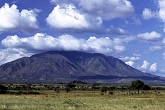Lake Victoria Tanzania Kenya Uganda
Lake Victoria is one of the African Great Lakes. The lake was named after Queen Victoria of the United Kingdom, by John Hanning Speke, the first European to discover this lake.
With a surface area of 68,800 square kilometres (26,600 sq mi), Lake Victoria is Africa's largest lake by area, and it is the largest tropical lake in the world. Lake Victoria is the world's third largest freshwater lake by surface area (only Lake Michigan-Huron and Lake Superior in North America are larger). In terms of its volume, Lake Victoria is the world's eighth largest continental lake, and it contains about 2,750 cubic kilometers (2.2 billion acre-feet) of water.
Lake Victoria receives most of its water from direct precipitation or from thousands of small streams. The largest stream flowing into this lake is the Kagera River, the mouth of which lies on the lake's western shore. There are two rivers that leave the lake, the White Nile (known as the "Victoria Nile" as it leaves the lake), flows out at Jinja, Uganda on the lake's north shore and the Katonga River flows out at Lukaya on the western shore connecting the lake to Lake George.
Lake Victoria occupies a shallow depression in Africa and has a maximum depth of 84 metres (276 ft) and an average depth of 40 metres (130 ft). Its catchment area covers 184,000 square kilometers (71,040 sq mi). The lake has a shoreline of 4,828 kilometres (3,000 mi), with islands constituting 3.7% of this length, and is divided among three countries: Kenya (6% or 4,100 km2/1,600 sq mi), Uganda (45% or 31,000 km2/12,000 sq mi) and Tanzania (49% or 33,700 km2/13,000 sq mi). The lake supports Africa's largest inland fishery
Also known as Victoria Nyanza, Lake Victoria is bordered by Uganda, Kenya, and Tanzania. It has an area of 26,830 square miles (the size of Ireland), and is 250 miles long at its greatest width, making it the world's second largest freshwater lake, after Lake Superior. It also has an average depth of 120 feet, with its deepest point reaching 250 feet. Lake Victoria receives its water from many rivers, the largest being the Kagera. The lake then drains into the Nile through Owen Falls, where there is a man-made hydroelectric dam. Of note, Lake Victoria is the youngest of the three rift lakes.
Lake Victoria was once home to more than 500 different species of haplochromine Cichlids before Nile perch were introduced to the lake by the lake's residents. Introduced in the 1950s to provide food for the people of the lake and develop commercial fishery, these predators grow up to 6 feet long, and have successfully wiped out some 250 of these 500 Cichlid species. The diversity of species is incredible when you realize that all of western Europe hosts only around 60 species of freshwater fish. Even more astonishing is that it's believed that all of these different species evolved from a single progenitor: Astatotilapia nubile.
It should also be noted that there are no extreme types of Victorian Cichlids that are not connected by a number of intermediate species. This has made classifying and grouping these fish extremely difficult for taxonomists. Con-sequently, more than 95% of the Cichlid species endemic to Lake Victoria belong to the old generic genus Haplochromis. Despite their default classification as all belonging to one large genus, very few generalizations can be made. One of the generalizations that is safe to make is that all but one species are maternal mouthbrooders. Also, these species are best kept in groups, not pairs.
The water in Lake Victoria is much less clear than that in Lakes Malawi and Tanganyika. Transparency has been measured between less than 4 and 10 feet in inshore areas. The pH is alkaline, ranging from 7.2 to 8.6, and carbonate hardness is between 2 and 8 dH. The temperature can be as low as 70 degrees at the surface during the dry season and reaches 81 degrees during the wet season. Interestingly, it receives more rainfall (about 200 to 250 centimeters a year) in the middle than anywhere near its edges. Some biotopes of the lake resemble those of Lake Malawi, with lots of large rocks (see photo).
With a surface area of 68,800 square kilometres (26,600 sq mi), Lake Victoria is Africa's largest lake by area, and it is the largest tropical lake in the world. Lake Victoria is the world's third largest freshwater lake by surface area (only Lake Michigan-Huron and Lake Superior in North America are larger). In terms of its volume, Lake Victoria is the world's eighth largest continental lake, and it contains about 2,750 cubic kilometers (2.2 billion acre-feet) of water.
Lake Victoria receives most of its water from direct precipitation or from thousands of small streams. The largest stream flowing into this lake is the Kagera River, the mouth of which lies on the lake's western shore. There are two rivers that leave the lake, the White Nile (known as the "Victoria Nile" as it leaves the lake), flows out at Jinja, Uganda on the lake's north shore and the Katonga River flows out at Lukaya on the western shore connecting the lake to Lake George.
Lake Victoria occupies a shallow depression in Africa and has a maximum depth of 84 metres (276 ft) and an average depth of 40 metres (130 ft). Its catchment area covers 184,000 square kilometers (71,040 sq mi). The lake has a shoreline of 4,828 kilometres (3,000 mi), with islands constituting 3.7% of this length, and is divided among three countries: Kenya (6% or 4,100 km2/1,600 sq mi), Uganda (45% or 31,000 km2/12,000 sq mi) and Tanzania (49% or 33,700 km2/13,000 sq mi). The lake supports Africa's largest inland fishery
Also known as Victoria Nyanza, Lake Victoria is bordered by Uganda, Kenya, and Tanzania. It has an area of 26,830 square miles (the size of Ireland), and is 250 miles long at its greatest width, making it the world's second largest freshwater lake, after Lake Superior. It also has an average depth of 120 feet, with its deepest point reaching 250 feet. Lake Victoria receives its water from many rivers, the largest being the Kagera. The lake then drains into the Nile through Owen Falls, where there is a man-made hydroelectric dam. Of note, Lake Victoria is the youngest of the three rift lakes.
Lake Victoria was once home to more than 500 different species of haplochromine Cichlids before Nile perch were introduced to the lake by the lake's residents. Introduced in the 1950s to provide food for the people of the lake and develop commercial fishery, these predators grow up to 6 feet long, and have successfully wiped out some 250 of these 500 Cichlid species. The diversity of species is incredible when you realize that all of western Europe hosts only around 60 species of freshwater fish. Even more astonishing is that it's believed that all of these different species evolved from a single progenitor: Astatotilapia nubile.
It should also be noted that there are no extreme types of Victorian Cichlids that are not connected by a number of intermediate species. This has made classifying and grouping these fish extremely difficult for taxonomists. Con-sequently, more than 95% of the Cichlid species endemic to Lake Victoria belong to the old generic genus Haplochromis. Despite their default classification as all belonging to one large genus, very few generalizations can be made. One of the generalizations that is safe to make is that all but one species are maternal mouthbrooders. Also, these species are best kept in groups, not pairs.
The water in Lake Victoria is much less clear than that in Lakes Malawi and Tanganyika. Transparency has been measured between less than 4 and 10 feet in inshore areas. The pH is alkaline, ranging from 7.2 to 8.6, and carbonate hardness is between 2 and 8 dH. The temperature can be as low as 70 degrees at the surface during the dry season and reaches 81 degrees during the wet season. Interestingly, it receives more rainfall (about 200 to 250 centimeters a year) in the middle than anywhere near its edges. Some biotopes of the lake resemble those of Lake Malawi, with lots of large rocks (see photo).






